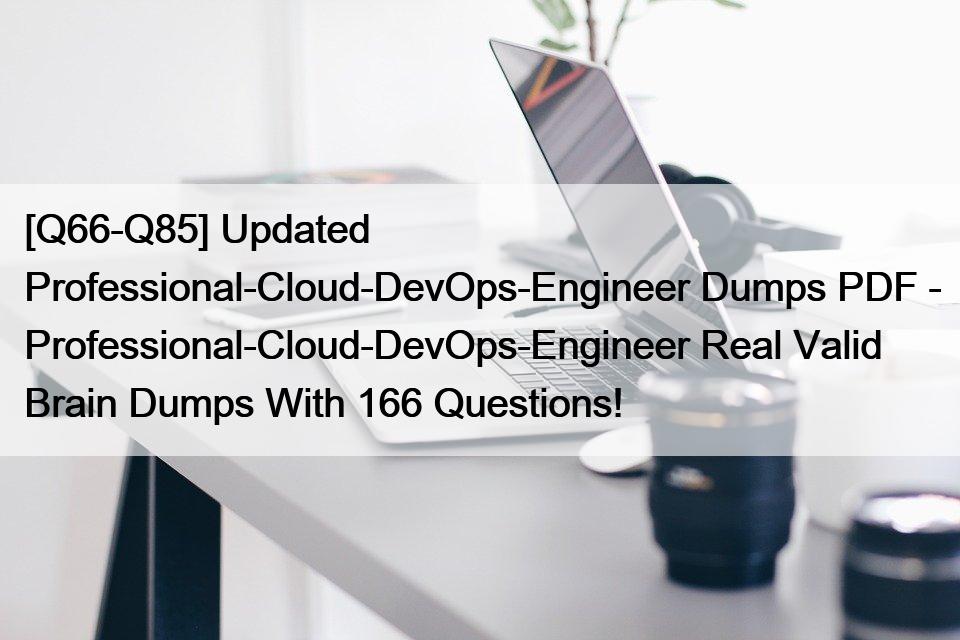|
This page was exported from Free Exams Dumps Materials
[ http://exams.dumpsmaterials.com ] Export date: Tue Feb 18 22:04:28 2025 / +0000 GMT |
[Q66-Q85] Updated Professional-Cloud-DevOps-Engineer Dumps PDF - Professional-Cloud-DevOps-Engineer Real Valid Brain Dumps With 166 Questions! Updated Professional-Cloud-DevOps-Engineer Dumps PDF - Professional-Cloud-DevOps-Engineer Real Valid Brain Dumps With 166 Questions! 100% Free Professional-Cloud-DevOps-Engineer Exam Dumps Use Real Cloud DevOps Engineer Dumps The Google Cloud Certified - Professional Cloud DevOps Engineer Exam certification exam consists of multiple-choice questions and simulations that test the candidate's ability to apply their knowledge in real-world scenarios. Candidates must demonstrate their ability to design and implement solutions using Google Cloud Platform services such as App Engine, Kubernetes, Cloud Functions, and Cloud Storage. They must also demonstrate their ability to use tools such as Stackdriver, Cloud Logging, and Cloud Monitoring to manage and monitor their applications and services.
Pass Your Professional-Cloud-DevOps-Engineer Exam Easily With 100% Exam Passing Guarantee: https://www.dumpsmaterials.com/Professional-Cloud-DevOps-Engineer-real-torrent.html |
|
Post date: 2024-03-26 13:36:21 Post date GMT: 2024-03-26 13:36:21 Post modified date: 2024-03-26 13:36:21 Post modified date GMT: 2024-03-26 13:36:21 |